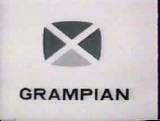


The franchise of Scottish Television theoretically stretched to Dundee. Even after the initial fault at the Black Hill Transmitter had been fixed, the coverage provided was patchy at best. Scottish naturally were interested when they heard that the ITA had a transmitter near Perth in their considerations, and tried to lay claim to it. However, the ITA had a different idea: to create a new area, based on transmitters for Inverness (at Roskill) and Aberdeen (Durris) first, then fill the gap in between later as needed.
Applications were invited in May 1960 and in stark contrast to the process for Scottish Television seven organisations applied. An initial round of interviews whittled these down to 3:
All possessed the collection of the local great and the good, and by now it was possible to put up as managing directors people with experience of ITV elsewhere. The ITA, in an early Solomon-like mood awarded the contract to North of Scotland, but required directorships in the company to be offered to people involved in the other two consortia.
The planned starting date was 1 October 1961, which gave them about one year to convert a former tram depot in Aberdeen into their studios, under the guidance of Howard Steele of ABC. As had happened with many earlier stations it looked as if it would be the Post Office links that might cause the trouble. Although the transmitters themselves were expected to be available at the same time, give or take a week, linking them together, and to the network in Glasgow proved to be problematic. The ITA itself provided the link between the two transmitters, but the Post Office revealed four months before the planned on-air date that they would not be able to provide the network link before February 1962, and then it would only provide a relay of Scottish Television's programmes, reducing the new station to be little more than a satellite of Scottish Television, with little chance to entice people to watch them instead in the overlap areas. A no-holds barred protest was made to the ITA, who in turn complained right to the top in the Post Office and to the Government. This proved successful, with the provision not only of the link by the original date, but it would come from the switching centre, thereby giving access to either Scottish Television programmes or an alternative from England. It would be some months before a second line could be provided to Glasgow to give the new company access to different English programmes than those provided to Scottish Television. In the end they affiliated to ABC Television.
"North of Scotland TV" was a name that was neither accurate, nor snappy and was replaced by Grampian in January 1961. The symbol chosen was officially described as a `St Andrew's Cross which evolves itself on the screen into a picture of the Grampians, with suitable music attached', although what eventually was used looked more like a few triangles which rearranged themselves into the cross. Over 600 tunes were considered, with the chosen being a combination of Scotland the Brave and Crimond.
The original timetable was kept, and Grampian launched on both of its transmitters on 30 September 1961. The programmes on that first day contained only a small amount produced locally, and correspondingly little fanfare. This low-key start was possibly appropriate for the struggle that was ahead.
The number of people watching Grampian was substantially fewer than the company had hoped. As would plague WWN more seriously, the potential audience in the crucial Dundee area who had been watching Scottish Television for some time had not rushed out for new aerials. The Black Hill transmitter had at more or less the same time finally been improved, and their reception was no longer sub-standard. Three months after their launch they only had about 13% of the ITV audience in Dundee, and the audience correspondence to the station amounted to little more than half a dozen letters per week!
The launch happened as Television Advertising Duty was starting to bite, and at a trough in ITV finances resulting from the effects of the Equity Strike. Grampian pleaded for a reduction in their rental. Although the ITA in reviewing Grampian's output considered that they had not helped by being over optimistic about the growth prospects and had provided little material that would encourage a switch to them, in the end they offered 20%. Grampian accepted this somewhat reluctantly, as they had asked for 30%.
It is not easy to pick when it exactly it happened, but by the middle of 1962 things began to pick up. It is noticeable that this did correspond to an increase in local production, which had branched out from the news/current affairs constraint into light entertainment and music. From having the smallest audience share of any ITV company they advanced to having the fourth highest. As so often has been the case before and since, the newspapers which had been so scathing about 'TV on a Shoestring' could now only utter words of praise for a company that was economically turning out programmes appreciated by their own local audience. No organisation came out to oppose either the 1964 or 1968 franchise award.
Durris 9H 30/09/61 Mounteagle 12H 30/09/61-03/01/85 Rumster Forest 8V 25/06/65 Angus 11V 13/10/65 Aviemore 10H 29/11/69
Durris 25H 19/07/71 Angus 60H 30/09/72 Rosemarkie 49H 08/10/73 Rumster Forest 24H 24/12/73 Knock More 23H 28/10/74 Keelylang Hill 43H 19/12/75 Eitshal 23H 30/07/76 Bressay 25V 24/12/76